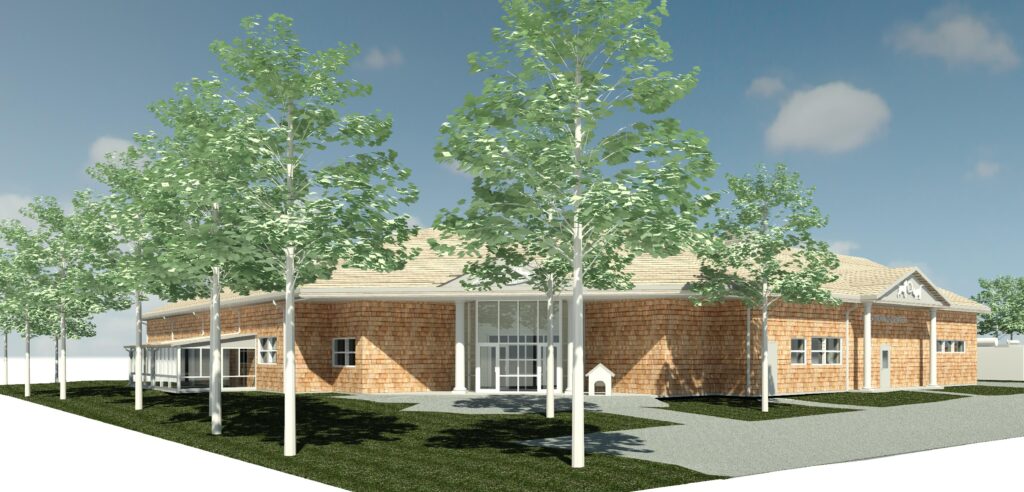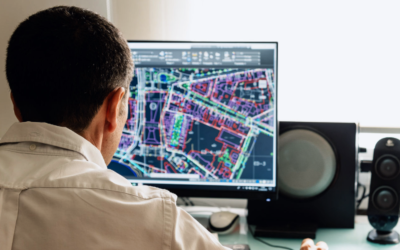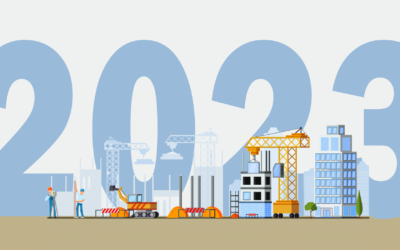Careers in Construction – A DJM Perspective
This post was originally published by Lori Buckman Moes on LinkedIn Pulse
Construction is one of the oldest industries. Data from McKinsey estimates that $10 trillion is spent on construction and construction-related goods and services each year. According to the U.S Bureau of Labor Statistics, construction employed 11.2 million people in the US in 2019. It is essential to our financial ecosystem and has provided new opportunities for many, me included. Since October is Careers in Construction Month, I thought I would offer a personal perspective from our team at DJM. Here is what some of our team members had to say about working in construction:
Phil Damm – BIM Draftsman
I started working in virtual construction and BIM back in 2013. For me, I chose this job because it was challenging. I really enjoy problem-solving and drafting includes a lot of that. I was an art student fresh out of college and it gave me a unique perspective on design.
You never know what information can be useful and I think the problem-solving skills that I have gained in this position have helped me even in my personal life.
Phil Damm, BIM Draftsmen DJM
I came into the industry knowing next to nothing but have learned so much along the way, not only about design but the construction process in general. You never know what information can be useful and I think the problem-solving skills that I have gained in this position have helped me even in my personal life.
Construction technology keeps getting better and better. Working as a drafter, I have had to adapt to new programs as clients want to start using them. During my time at DJM, I have learned CadPipe, QuickPen, FabCad, and now Revit. Each has been different, useful, and provided fresh insights.
Aisha Whitman – Project Manager
My journey in construction has been a long one. Technically, I have been involved in construction since I was 14. My mother was a GC for residential housing, commercial buildings, and roads. She would show me floor plans, ask my opinion, and I would visit sites with her regularly to watch her resolve coordination issues.
After getting the introduction to construction at such an early age, in 2003 I began my career as a licensed architect. The firm I worked with designed luxury residential projects and was different than most. We oversaw projects from the planning and development to on-site management. This was pre-BIM, so coordination was done with 2D drawings or on-site visits. Close supervision was essential to capturing the details and resolving conflicts with various trades.
For me, construction was attractive because I could take the ideas in my head and bring them to life.
Aisha Whitman, Project Manager DJM
For me, construction was attractive because I could take the ideas in my head and bring them to life. I realized I could look at an unfinished project and see the completed concept in my head, in 3D. It was like a virtual reality experience. This is still the case. When I look at plans, I walk through the spaces and can see the bare-bones and visualize various options for completion in my mind.

Technology in Construction (Aisha continued)
Thankfully, technology today has come a long way and visuals I used to only see in my head can now be shared with Building Information Modeling (also called BIM). BIM technology has become extremely detailed since I first started. Before this innovation, the preconstruction process was extremely time-consuming. As-built drawings would be created with manual field measurements. This process took so many manhours and was extremely inefficient compared to what we do now. Today 3D scanners capture every minuscule detail of the site with photos in a fraction of the time. These scans are way more valuable than a sheet full of dimensions. The time that this saves me, means I can focus my energy and time on creativity and less time worrying about costly trade errors.
If you are curious about entering construction, I would suggest starting with the basics. Learn what happens on the field with installation as well as basic code requirements for the discipline you are interested in. Then find out what software and tools are used in that field for design and management. Download a trial version and make it a point to learn the software within the trial period. There are a lot of free resources available on the internet so creating your own lesson plan is easy.
Matt Webster – Senior Project Manager
In high school, I was curious about the industry, so I took CAD classes. Over the summer between my freshman and sophomore year, I had an internship where I modeled an entire Rite Aid. Seeing the building evolve from the ground up using my drawings got me hooked. I continued to pursue summer jobs where I could learn additional drafting skills including CAD Pipe, QuickPen, and Fabrication Cad.
3D models are no longer just used by designers, BIM coordination is becoming a must-have, and cloud services have improved the coordination workflow between trades.
Matt Webster, Senior Project Manager DJM
Since I started, technology has changed the industry immensely. I work primarily in coordination, and 3D design has revolutionized the way we operate. 3D models are no longer just used by designers, BIM coordination is becoming a must-have, and cloud services have improved the coordination workflow between trades. I have also seen the use of prefabrication increase. Assembly of components and buildings off-site is starting to be viewed as a valid option and is proving to be a time and money saver.
For anyone interested in entering 3D design or BIM coordination, start with classes in a trade or high school. Get a few AutoCAD books and learn what is new and how the industry has changed. YouTube is also a great way to learn and is completely free.
My Journey
My journey in construction began in my father’s mechanical contracting business. I started as an estimator, but also learned to adapt to whatever was needed to get a project or task done. This included everything from AIA billings to being a person on the ground helping to set roof top units either by crane or helicopter. Eventually I founded my own 3D drafting firm with my husband, Dan Moes.
When I started in construction, I would often be the only woman in meetings. I am happy to say this is no longer the case. While women still make up a small 9.9% of the workforce, the gender gap is something that the industry is aware of and is working to close. A recent report from Smart Asset shows some encouraging progress as the number of women working as construction managers doubled from 2015 to 2019. I believe that as technology continues to reshape the industry, we will continue to see this encouraging expansion of diversity, not just with gender but with race, ethnicity, and background.
Just from my conversations with our team at DJM, it’s obvious that people come to construction from various backgrounds. Many different specialties are needed for each project. Technology, design, management, finance, marketing, and so many more strengths are vital to the industry.

The construction career outlook is looking bright
In a recent Construction Executive article, Tim Milam said, “By attracting and hiring a diverse workforce, with a variety of points-of-view and life experiences, firms can create stronger teams.” This is absolutely true. So, whatever your career background, gender, race, or ethnicity, go for it. The construction industry is open and ready for you. And if you are interested in a career in design, DJM is always looking to add talent. If you are interested, send me a message!



